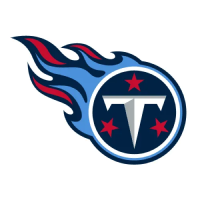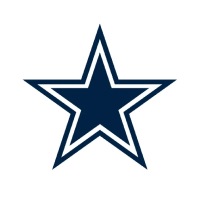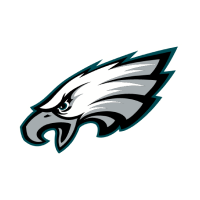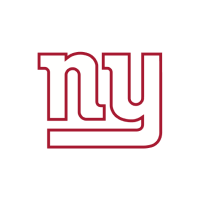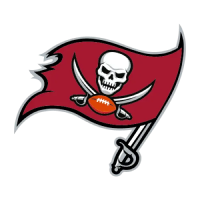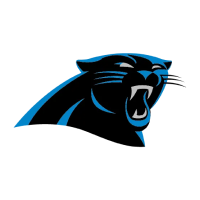The perceived overall success or failure of a fantasy season for any given player is typically defined by their first-half performance.
That’s ridiculous, you might say as you point out examples of strong performers during the fantasy playoffs that erase any early-season woes. Sure, players like 2018 Derrick Henry, 2019 Breshad Perriman, and 2020 Jonathan Taylor defined their fantasy seasons by helping fantasy managers secure championships with late-season heroics. However, more often than not when the next fantasy season rolls around, fantasy managers remember good starts more than they remember poor finishes—particularly if they didn’t roster the player themselves.
Don’t believe me? Ask yourself this: How would you describe D.K. Metcalf and Kyler Murray’s 2020 fantasy seasons?
Judging by ADP, most fantasy managers think extremely highly of what that NFC West duo was able to accomplish last season. Metcalf finished as the WR7 in total points and WR10 in average points per game in PPR. Murray finished as the QB2 in total points and QB3 in average points per game. Metcalf’s current ADP is WR5 while Murray’s is QB3. However, I’m willing to bet that the fantasy managers taking Metcalf and Murray that high are unaware of how they played in the back half of last year.
The inverse is true as well. What kind of fantasy season do you think Lamar Jackson and Kirk Cousins had in 2020? As Jackson is on the verge of slipping to QB5 in ADP and Cousins is hovering around QB18, I’d venture to guess their second halves have been ignored by many as well.
Let’s dive into six examples of players whose 2020 splits are not getting enough attention. What’s important to remember is that, barring a major, tangible change that directly correlates to an increase or decrease in production, a player is a sum of his parts and not simply defined by one stretch of games. The information below is intended to start an internal conversation in the minds of fantasy managers about where a player should actually be ranked and where a player’s actual realistic ceiling and floor might be. This is not a sleepers and busts list. This is a prompt to give each of these players an extra look before you place them somewhere in your personal rankings.
One of the major inspirations for this article is a pair of Seahawks. After a blistering hot start to the season both in real life and fantasy, things cooled considerably in the second half of last season. Let’s start with Metcalf since he’s being drafted in Round 2 as a top-five wide receiver.
D.K. Metcalf
ADP: WR5
TDN Rank: WR10
Metcalf’s first eight games were sensational, averaging 21.0 FPPG as the WR2 in average points. However, as the Seahawks’ offense began to fall apart and Wilson’s MVP campaign went up in smoke, so too did Metcalf’s fantasy value. The sophomore receiver didn’t even rank as a WR3 over his final eight games, coming in at WR37 with an average of 12.9 FPPG.
The Seahawks’ offense for 2021 is a bit of a mystery at the moment with new offensive coordinator Shane Waldron replacing Brian Schottenheimer, but how often they “Let Russ Cook” will be a major factor in Metcalf’s fantasy value. Drafting him as the WR5 is buying at his absolute peak.
Russell Wilson
ADP: QB6
TDN Rank: QB8
As mentioned above, Seattle’s offense changed considerably at the midpoint of last season. After eight games, the Seahawks ranked 10th in the NFL with an average of 37.1 pass attempts per game. After averaging nearly four fewer passing attempts per game in the second half, they finished 17th in the NFL in attempts. Wilson’s production plummeted in that stretch, going from 29.52 FPPG in his first eight games (QB2) down to 17.08 in his final eight (QB15).
Even with the addition of Waldren, head coach Pete Carroll is still in charge. That makes Wilson’s range of outcomes rather large for 2021.
Kyler Murray
ADP: QB3
TDN Rank: QB4
Murray was such a joy to watch for the first two and a half months of the 2020 season. He scooted all over the field like a marble on ice and was one of the most exciting players in the NFL. However, large cracks in the armor started to appear in Week 11 against the Seahawks. From Week 12 on, Murray simply wasn’t the same player.
After beginning the 2020 season as the QB1 through his first 10 games (29.17 FPPG), Murray fell off a cliff in his final half-dozen contests. The young passer averaged just 16.15 FPPG, ranking as the QB20 from Week 12 on last season. Now, that’s only a six-game sample size, but given his need to significantly improve as a passer overall, I have plenty of concerns about Murray living up to expectations this season.
Note, while Murray’s TDN rank among fellow quarterbacks is similar to his ADP, he’s about 20 spots lower in overall ranking and not among the Tier 1 quarterbacks.
Lamar Jackson
ADP: QB4
TDN Rank: QB1
Now it’s time for the inverse.
Ask a person at random in the fantasy community about Jackson’s 2020 campaign and they’re bound to use the word “disappointing.” However, those players probably didn’t roster the Baltimore Ravens’ passer down the stretch.
After a mediocre first eight games in which he ranked as the QB12 with an average of 20.43 FPPG, Jackson turned things on late in the year, posting an average of 25.48 FPPG over his final seven games. That was only fractions of a point behind Josh Allen for the No. 1 spot among fantasy quarterbacks from Week 10 on. Given that finish, an improved receiving corps, and his high projected rushing totals, Jackson deserves to be among the Tier 1 fantasy quarterbacks this season.
Kirk Cousins
ADP: QB18
TDN Rank: QB16
No one is ever excited to roster Cousins—heck, I’m not even sure the Minnesota Vikings themselves are all that jazzed about it—be he’s a player who typically out-performs his ADP and winds up starting a few games for someone in every league. After a poor first seven games that placed him outside the top 20 fantasy quarterbacks with an average of a little more than 16 FPPG, Cousins exploded in his final nine outings. He averaged 22.92 fantasy points per game, ranking as the QB6 from Week 9 on.
No one is saying you should leave your draft with him as your starter in a single-QB league, however, with weapons like Justin Jefferson, Adam Thielen, Dalvin Cook, and Irv Smith Jr. all returning, he is a high-end QB2 that deserves to be drafted.
Tom Brady
ADP: QB9
TDN Rank: QB5
It’s a little weird to say that Brady’s second half is flying a bit under the radar given, you know, the Super Bowl victory it ended with, but it’s kind of true. Maybe this is more about age bias than first-half versus second-half splits, but I’m not sure what the disconnect is here. All of the Tampa Bay Buccaneers’ weapons are back and Brady ranked as the QB4 from Week 10 on last season, averaging 24.34 FPPG—he ranked as the QB13 with an average of 19.95 FPPG through his first nine games.
Once Brady became fully comfortable with the Buccaneers’ playbook (reportedly around Week 10), we saw a different player—and that held true throughout the real-life playoffs as well. From Week 10 through the Super Bowl (11 games), Brady averaged nearly 8.2 yards per attempt with a touchdown percentage of about 7.5%. I don’t see why Brady can’t put up top-half of QB1 territory numbers in 2021.
Other Splits To Know
- Tyler Lockett: WR3 in first eight games; WR31 after
- T.J. Hockenson: TE4 in first eight games; TE14 after
- David Montgomery: RB26 in first nine games; RB2 after
Filed In
Related Articles
NFL Draft
Arik Gilbert Doesn’t Need Big Workload To Be A Top NFL Draft Pick
- Aug 22, 2022
NFL Draft
2023 NFL Mock Draft: Marino 1.0
- Aug 22, 2022
Written By









